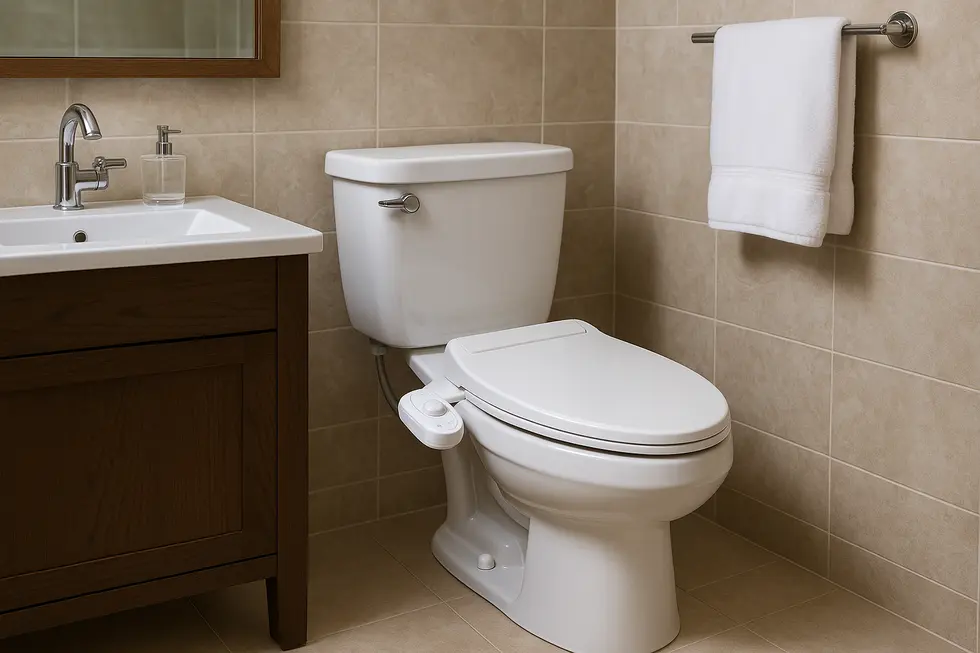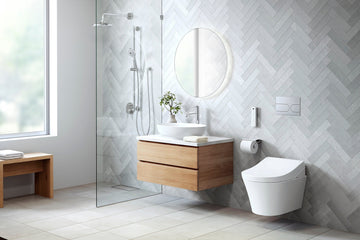In the ever-evolving world of technology, the concept of a smart bathroom integration with toilets is not just a futuristic dream but a present-day reality. Industry QA professionals are particularly interested in how these advancements can be seamlessly integrated into existing structures. This article delves into the intricacies of smart bathroom systems, focusing on their integration with modern toilets, and explores the implications for quality assurance in the industry.

The Rise of Smart Bathrooms
The rise of smart bathrooms is a testament to our growing desire for convenience and efficiency. With features like automatic flushing, seat warming, and self-cleaning capabilities, smart toilets are revolutionizing the way we perceive bathroom experiences. These innovations are not only about luxury but also about enhancing hygiene and sustainability. The integration of smart technology in bathrooms aims to create a more personalized and eco-friendly environment.
For those in the QA industry, this evolution presents unique challenges and opportunities. Ensuring that these systems function seamlessly requires rigorous testing and validation processes. The integration of IoT devices in bathrooms means that QA professionals need to ensure both software and hardware reliability.
Key Features of Smart Toilets
Smart toilets come equipped with a plethora of features designed to improve user experience. Some of the standout features include:
- Automatic Flushing: Sensors detect when a user has finished and automatically flush the toilet, ensuring cleanliness and reducing water wastage.
- Heated Seats: For added comfort, especially in colder climates, smart toilets often come with seat warming features.
- Self-cleaning Systems: Using UV light or electrolyzed water, these toilets can clean themselves, reducing the need for manual cleaning.
- Bidet Functionality: Many smart toilets include integrated bidets, offering users enhanced hygiene with adjustable water pressure and temperature settings.
- Deodorizing Features: Built-in air purifiers ensure that unpleasant odors are neutralized, keeping the bathroom atmosphere fresh.
These features not only enhance user comfort but also pose challenges in terms of quality assurance. Each component must be tested for durability, safety, and performance, making QA a crucial part of the development process.
Challenges in Integration
Integrating smart technology into traditional bathroom setups is not without its challenges. One of the main concerns is ensuring compatibility between different devices and systems. The presence of multiple sensors, actuators, and controllers means that there is a higher risk of malfunction if not properly integrated.
Furthermore, data privacy is a significant concern. Smart toilets often collect user data to offer personalized experiences. Ensuring that this data is stored securely and used ethically is paramount. QA professionals must work closely with developers to establish protocols that safeguard user information.
Another challenge is the maintenance of these advanced systems. Unlike traditional toilets, smart toilets require regular software updates and maintenance to function optimally. Industry QA professionals must develop comprehensive maintenance schedules and guidelines to ensure these systems remain operational.
Opportunities for Industry QA
Despite the challenges, the integration of smart technology in bathrooms presents numerous opportunities for industry QA professionals. By embracing this technology, QA professionals can position themselves as leaders in a rapidly evolving field.
The need for thorough testing of smart bathroom systems means that there is a growing demand for skilled QA professionals who understand both the technological and practical aspects of these systems. As the industry continues to grow, there will be ample opportunities for career advancement and specialization.
Moreover, QA professionals can play a pivotal role in shaping the future of smart bathrooms. By collaborating with developers and manufacturers, they can ensure that these systems are not only innovative but also reliable and safe for consumers.
Conclusion
The smart bathroom integration with toilets represents a significant leap forward in the realm of home technology. For industry QA professionals, this evolution offers both challenges and opportunities. While ensuring the reliability and safety of these systems is no small feat, the potential for growth and innovation in this field is immense. As we move towards a more connected and intelligent world, the role of QA professionals will be more important than ever in ensuring the success of smart bathroom systems.
For more insights on the latest in bathroom technology, check out AI-powered bathroom systems and the rise of the high-tech toilet.

Frequently Asked Questions
What are the benefits of smart toilets?
Smart toilets offer numerous benefits, including enhanced hygiene, water conservation, and added comfort through features like heated seats and automatic flushing. They also contribute to a more sustainable environment by reducing water wastage.
Are smart toilets difficult to maintain?
While smart toilets require regular maintenance, including software updates, they are designed to be user-friendly. Manufacturers provide guidelines to ensure that these systems remain in optimal condition.
How do smart toilets ensure data privacy?
Smart toilets often collect data to improve user experience. It's crucial that manufacturers implement robust data encryption and storage protocols to protect user information. QA professionals play a vital role in ensuring these standards are met.
This article contains affiliate links. We may earn a commission at no extra cost to you.






